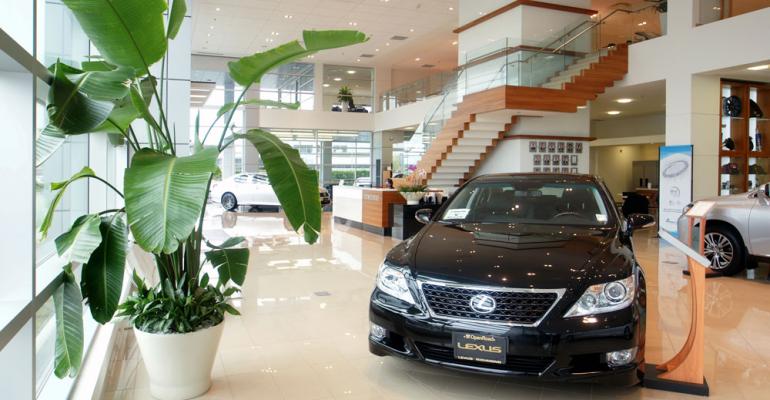NEW YORK – People hoping for dramatic changes in the franchised dealership system may end up disappointed.
Auto retailing will change, but not in a topsy-turvy way, automotive consultant Glenn Mercer says here at a conference presented by J.D. Power and Associates and the National Automobile Dealers Assn.
“We’re not predicting radical change, although doing that would be fun,” Mercer says at the event tied to the New York International Auto Show. “But by 2025, we’ll see more of an evolution than a revolution.”
Auto industry predictions often turn out as inaccurate, he acknowledges. “This industry is hard to forecast. You can’t get overexcited about predictions, because so many of them haven’t panned out in the past.”
That said, he offers some soothsaying in a presentation entitled, “The Dealership of the Future.”
Mercer foresees the number of U.S. dealerships staying relatively flat, but with stores selling more cars, increasing throughput, or deliveries per dealership.
Currently, there are roughly 17,500 dealerships in the U.S., with an average throughput of about 800 units a year, according to consultancy Urban Science.
In coming years, “we expect very large throughputs, averaging well over 1,000 vehicles per store,” Mercer says.
Despite more consumer online car shopping, dealership showrooms will remain important places to highlight and sell vehicles, but they needn’t be huge or look alike, he says.
Some auto makers’ brand-standardization plans for virtually cookie-cutter dealerships, right down to the color of tiles, make little sense, says Mercer, author of a NADA report that questions whether major facility upgrades offer sufficient returns on investment or spark more vehicle sales.
“We don’t see the showroom going away, but you don’t have to dynamite existing facilities and build standardized showrooms,” he says. “A showroom is a box. You can achieve standardization with common imagery and graphics inside that box.”
Standard furniture is another brand distinguisher that “comes relatively inexpensively and doesn’t require pouring concrete,” he adds.
Mercer is right in that regard, says Shau-Wai Lam, chairman of the New-Jersey based DCH Auto Group, which owns dealerships in the U.S. and China.
“Larger dealerships require more land, and in certain areas, such as New York City, that becomes a very expensive proposition,” he tells WardsAuto.
More dealerships will build satellite service centers in an effort to attract more customers, Mercer predicts, noting vehicle repair and maintenance operations are among the most profitable at dealerships. “The back end is more lucrative than the front end.”





